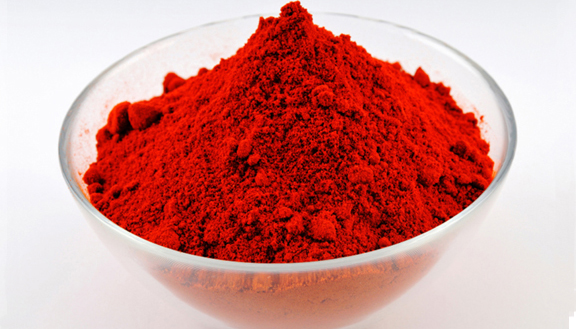Fermented Red – A Game Changer?
posted by dinaF February 2014

Courtesy of Chr. Hansen
Ed. Note: Carmine, a popular red colorant, is not kosher due to the prohibition of insect derived foods. A synthetic version is a major contribution to kosher food production.
The ability to produce natural colors based on fermentation could radically change the market place and constitute a ticket to a brave new world
Red is the most used color in the food industry, and carmine is a very important natural red color. It is used in a large number of products due to its excellent coloring properties.
Building on core competences
A project has been running over the past few years aiming at developing a new production method for carmine as an alternative to the production method in use today.
The project, which has been granted funds from the Danish High Technology Foundation, builds on Chr. Hansen’s unique technological platform. In the fermented carmine project we are leveraging our core competences within fermentation in the color business with exciting potential:
“The idea is to find the gene that produces the pigment and put it into a production organism – possibly yeast – so we can produce carminic acid by fermentation, or in a “cell factory”, instead of extracting it from the insect,” explains Mads Bennedsen, Senior Research Scientist.
18,000 genes “To map all the DNA, the so-called genome, of a cochineal is a huge task.
However small the insect is (1/8″) it has 18,000 genes, and we reckon that 5-10 of those are responsible for the production of carminic acid.
Thanks to our expertise in gene sequencing we have now narrowed the candidates down to approximately 50 genes,” he elaborates.
“We are applying several different scientific strategies. So if the approach of trying to copy the lice’s biosynthesis pathway to making color fails, you could say, in a manner of speaking, that we have plans B, C, D and E in place to fulfil the task.”
Explosion – paradigm shift – technological revolution … Once commercially available on an estimated 5-10 year horizon, fermentation produced carmine represents a great technological leap and it will provide a major competitive advantage in the market place.
“If successful as we hope, this project is a game changer. We will have a more scalable production and we will be able to protect the business with solid patents. Once the technology is in place for carmine, we could potentially expand it to other natural colors as well, and that could make it a biotechnological revolution. And I am having a ball being part of it!” concludes Mads Bennedsen.